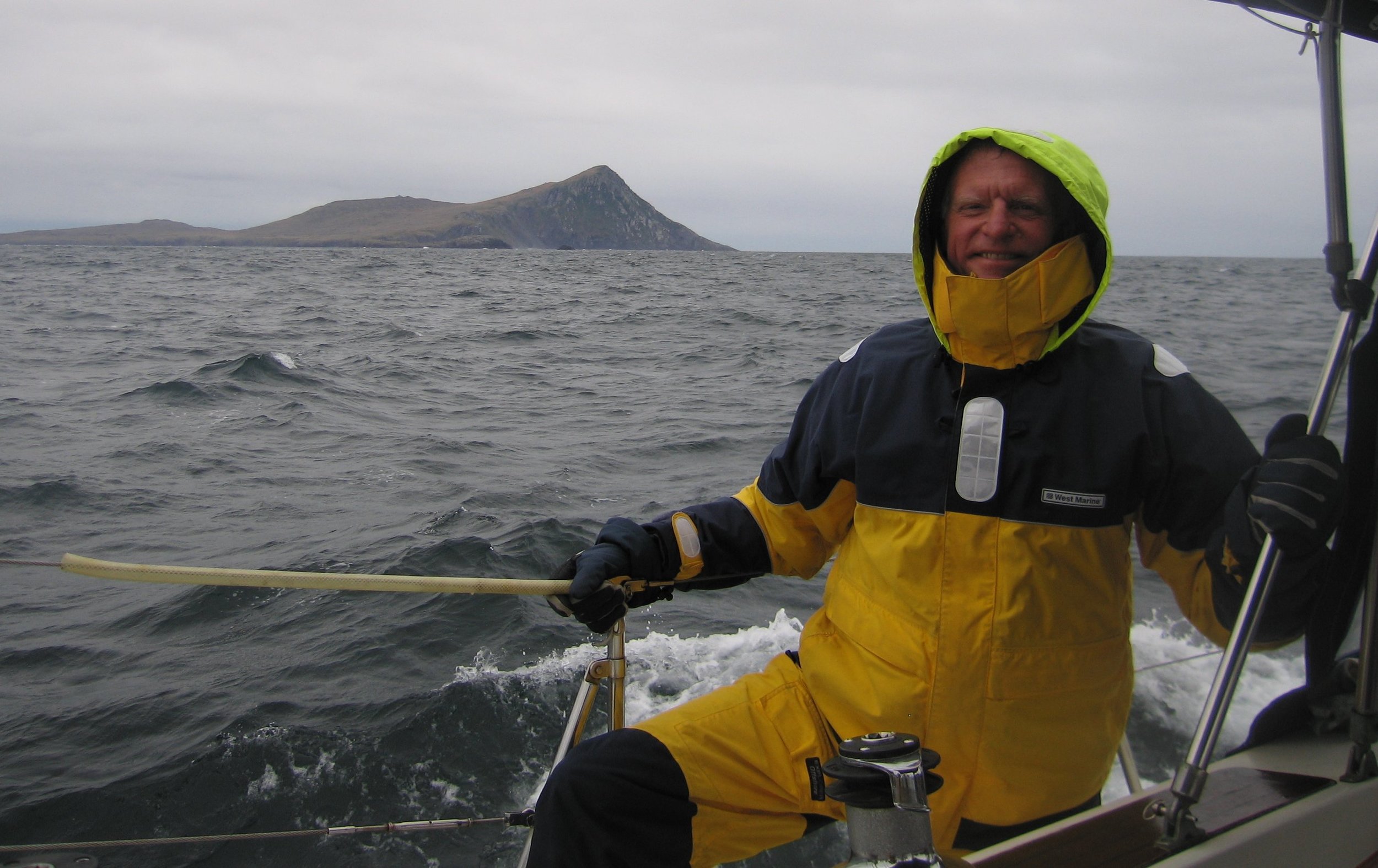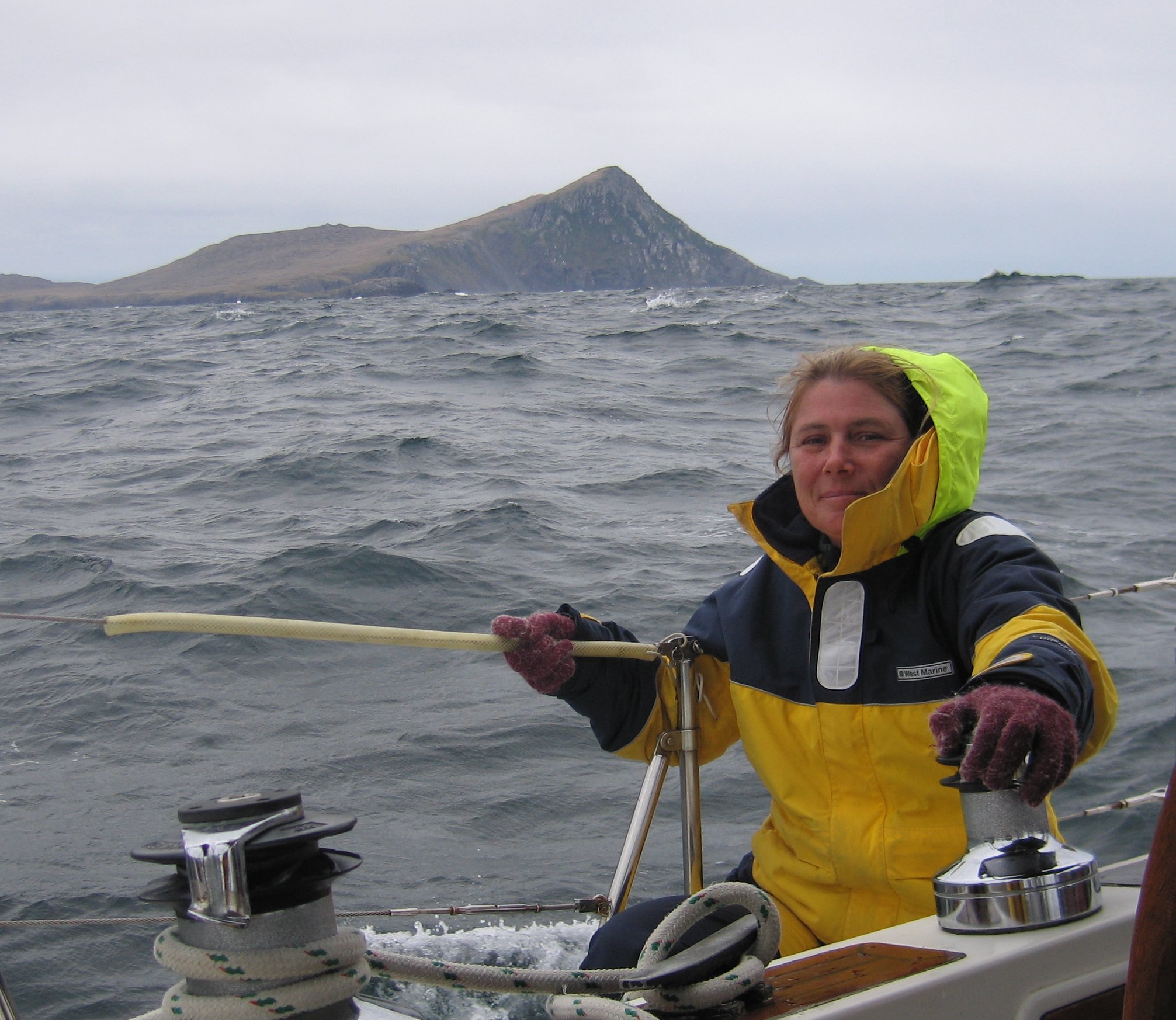There to Here - Down, Around & Up the Other Side
/Well, the Pacific did wait for us as we decided to navigate the Patagonian canals and head to Tierra del Fuego and the bottom of the world. Even the names sound exotic, don’t they? The Tierra del Fuego (Land of Fire), the Straits of Magellan and the Beagle Channel … places we’d read about, but never thought we’d visit, never mind spend a month or more exploring them.
Lots of extra fuel jugs, landlines on reels and plenty of food and wine to last us till the other end of the canals.
There was lots of preparation involved … longer lines for ties to shore and reels to stow them on, extra fuel and provisions, special “zarpes” (permission) from the Chilean Armada, a detailed cruising guide for the area and a different kind of mindset. We would be traveling about 1,200 nm from Puerto Montt to Puerto Williams, Chile, with few options for supplies or assistance to a part of the world described by Lucas Bridges as the “the uttermost part of the Earth”.
The canals, natural waterways along the southwestern Chilean coast, are located inside an archipelago of islands, mostly protected from the Pacific. There’s a labyrinth of beauty with innumerable little offshoots, nooks and crannies to tuck into for the evening or when the weather threatened … and it did quite regularly. The austral summer was at its peak and the daylight hours were long, affording us the opportunity to make miles when the weather was good. We mostly motored, sailing was rarely an option as the weather was unpredictable and some of the canals and passes were quite narrow.
Rowing lines ashore was a challenge at first.
It took awhile, but we became quite proficient at 2, 3 and 4-point tie-ups. The anchorages are deep and small, so tying to land was necessity to keep us from swinging into rocks or shore. We’d anchor and while Marcie held the boat in place as best she could, David rowed to shore in the dinghy and tied a line around a tree, a rock or whatever seemed sturdy and available. We honed our technique until the whole process could be completed in less than 20 minutes … a far cry from the 2-hour ordeal on our first try.
Some days were absolutely perfect with little wind and outstanding views and anchorages. Other days the wind “blew like snot” and rain fell in torrents. The initial angst of being isolated and out of touch subsided quickly as we delved deeper and deeper into the canals. Every once in awhile we would see the Navimag ferry which plies these waters transporting supplies and passengers between Puerto Montt and Puerto Natales. Sometimes we heard radio traffic, but we seldom saw another sailboat.
Some days were perfect - Canal Moraleda, Patagonia
About half way to Puerto Williams lies the charming, but rustic, little port town of Puerto Eden. We tied up there for a couple of days to stretch our legs and take advantage of “civilization” and the port captain’s hospitality.
Charming, albeit rustic, little town of Puerto Eden
As we traveled, we began reading aloud to each other in the evenings ... Joshua Slocum’s Around the World Alone was our favorite especially as we entered the Straits of Magellan and then the Beagle Channel. As he described in detail some of the bays in which he anchored back in 1898, we reveled in the fact we were anchoring in the same spot, enjoying much the same scenery well over a century later. Luckily, no hostile Tierra del Fuegans boarded us in the night, and thus thumbtacks on the deck were not a necessity.
Bright blue glaciers swirled down the mountainsides into the canals.
We gazed at Ushuaia, Argentina as we passed by, unable to stop because we had not yet cleared out of Chile. Strange rules between countries that tolerate each other, but don’t necessarily like each other. Instead, we sailed another 25 miles beyond Ushuaia to Puerto Williams, Chile where the Yacht Club Micalvi awaited us. The scenery in the area is breathtaking and the ambiance is party, party, party.
Rafting up at the Yate Club Micalvi was an experience unto itself.
The Micalvi is an intentionally grounded munitions carrier that has been “repurposed” into a yacht tie-up point. Any number of yachts tie up along side and then more yachts raft up the them, and still more yachts raft up to them until there are three and four yachts side-tied together extending out from the Micalvi. The crew on the outside boat must tromp over the other boats to get to the Micalvi and to lug fuel and water to their boats. Hiking boots were severely frowned upon. Everyone must negotiate a circuitous path through the leaking, rusty hulk of the Micalvi to get to shore. It’s an adventure!
After much deliberation, we made a formal request to the Chilean Armada and received permission to go to Cape Horn. I know it sounds scary and treacherous and when the mariners of old did it, it was. Nowadays, sailors wait for a weather window and when the weather is suitable, they sail past Cape Horn. They do not “round the Horn” … there’s a significant distinction between rounding and sailing around.
On a bright, sunny day with dolphins as our guides, we decided to go for it. The sea was so calm, we had to motor for the first few miles, then the wind picked up … then it picked up a little more … and a little more … and a lot more. We sailed past Cape Horn with no options for stopping and found refuge in Caleta Martial a few miles away. By the time we dropped the hook, the wind was howling at 50-60 knots sustained. The holding was good and we hunkered down for three days of gale force winds before being able to head back to Puerto Williams. But, we had sailed around Cape Horn.
Ushuaia, Argentina, the southernmost city on the planet
Back in Puerto Williams, we checked out of Chile and headed back up the Beagle Channel to Ushuaia, (Oosh-why-ah) Argentina, the southernmost city on the planet. With a backdrop of snow-covered mountains, Ushuaia is a lovely city … albeit, like many isolated areas, a former penal colony. We anchored midst Antarctic exploration and touring vessels and our wanderlust got the better of us.
We weren’t keen to take Cups to Antarctica, but what if we could book passage on one of the many vessels heading there. As luck would have it, friends minded Cups and Jelly and we booked a last minute, half price fare for 12 days in Antarctica. It seemed over the top and it was … Antarctica is other-worldly. Check out lots more Antarctica pix and discussion in our travelogue.
Snow on the decks ... Brrr! Time to head north.
The austral winter was fast approaching as we made our way east along the Beagle Channel. A blizzard en route reminded us that we needed to make haste and head north to the warmth of Mar del Plata, Argentina. Still in heavy offshore clothing, it wasn’t until we tied up to the dock at the hospitable Yacht Club Argentino that we realized we were at last warm.
Big Jesus gave us a warm welcome to Mar del Plata, Argentina.
We relaxed, regrouped and researched for a week in Mar del Plata and finally decided that Piriapolis, Uruguay (Piri to the locals) was probably the best place for Nine of Cups to haul out and have some work done.
The marina in Piriapolis, Uruguay was just perfect for a pair of weary sailors!
We crossed the expansive Rio de la Plata, considered the widest estuary in the world, and arrived in Piri at dawn one morning. It was time for some R&R, some inland travel, a little “nesting” time, some TLC for Cups and some future planning.
Click here for the next in the series: There to Here - Uruguay, Argentina and Atlantic x 2













